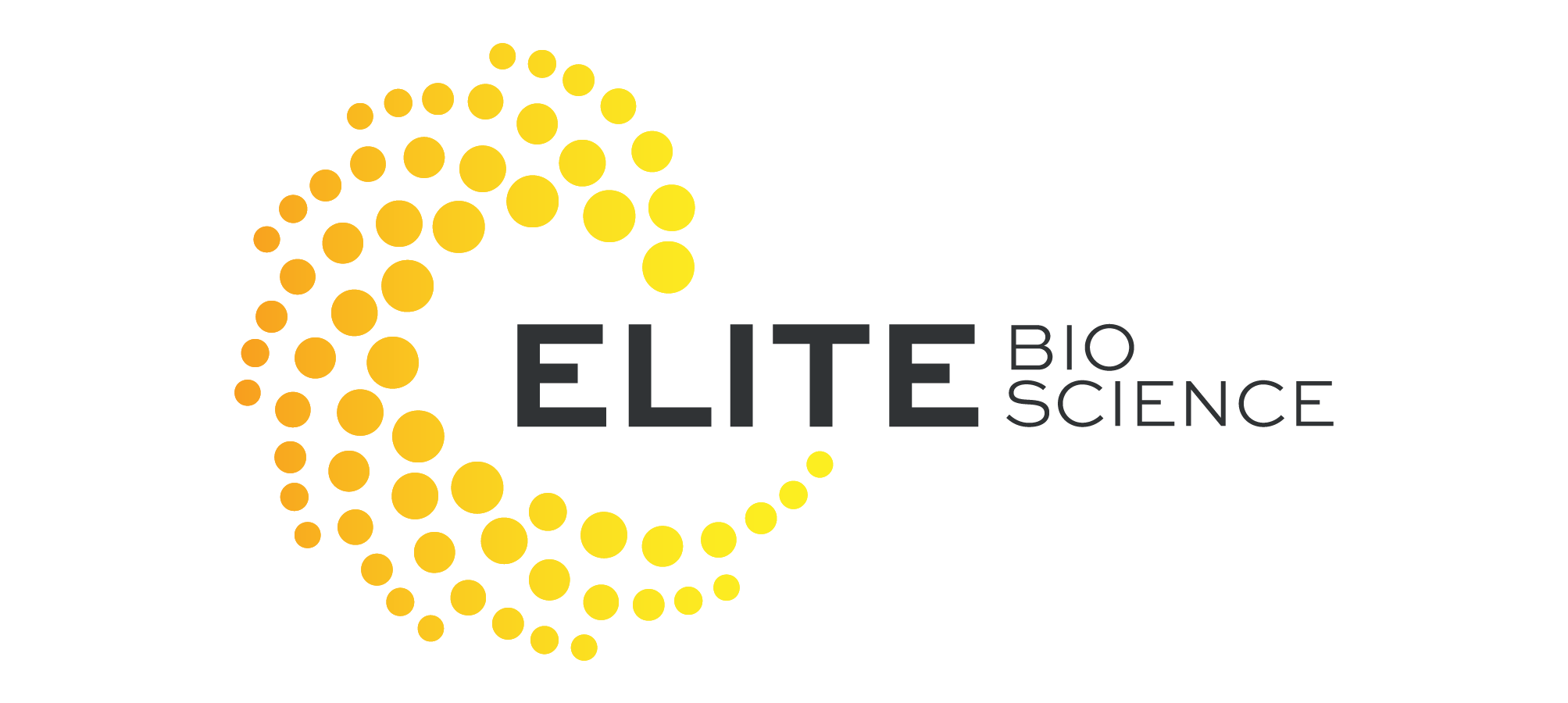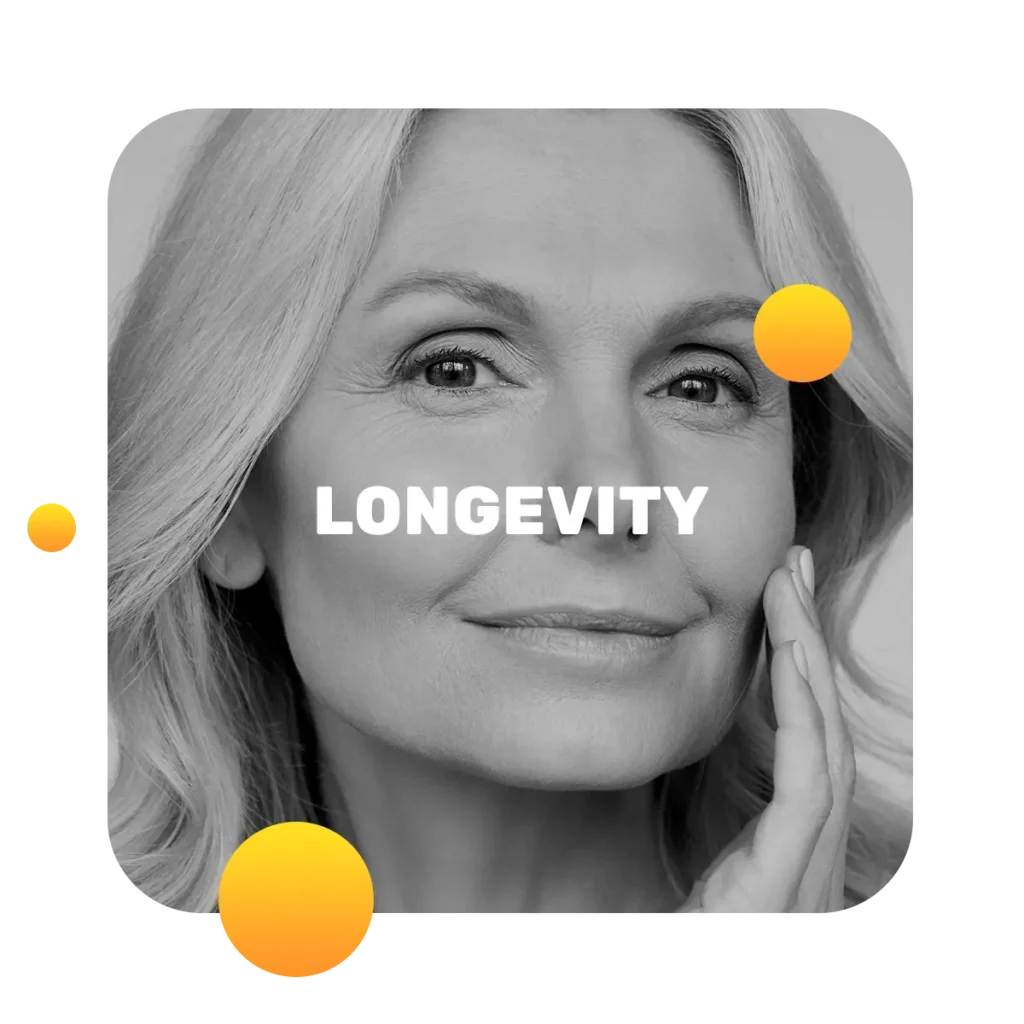how to tighten skin after weight loss: A practical guide
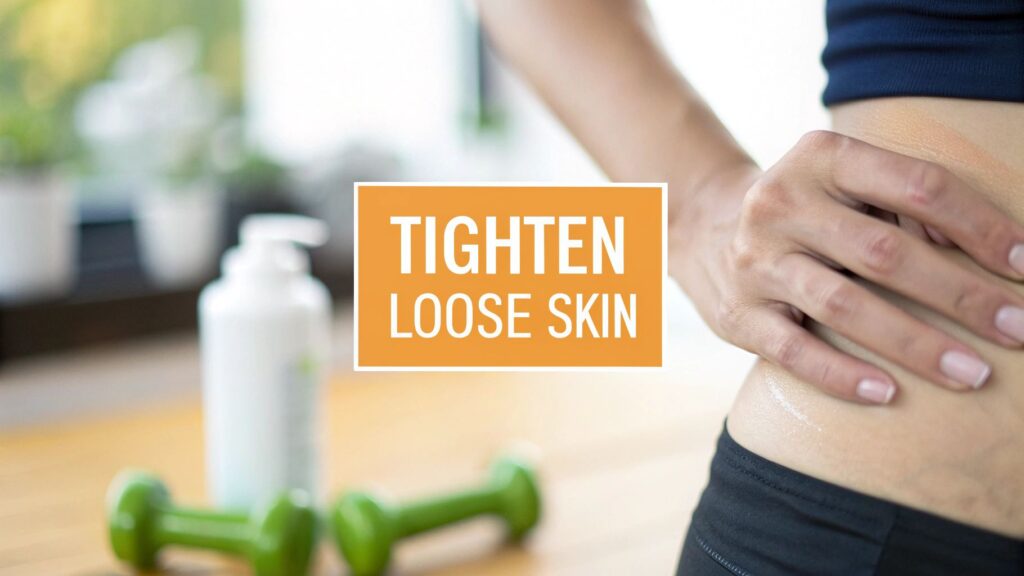
Losing a significant amount of weight is a massive accomplishment, but the journey often doesn't end when you hit your goal on the scale. Many people find themselves facing a new challenge: loose skin.
To effectively tighten skin after weight loss, you need a game plan. This isn't just about one magic cream; it’s a multi-layered approach that involves building muscle to fill out the space, fueling your body with collagen-supporting foods, and sometimes exploring targeted treatments.
But first, let’s get into why this happens. Understanding the cause is the first step toward finding the right solution for you.
Why Skin Loesens After Major Weight Loss
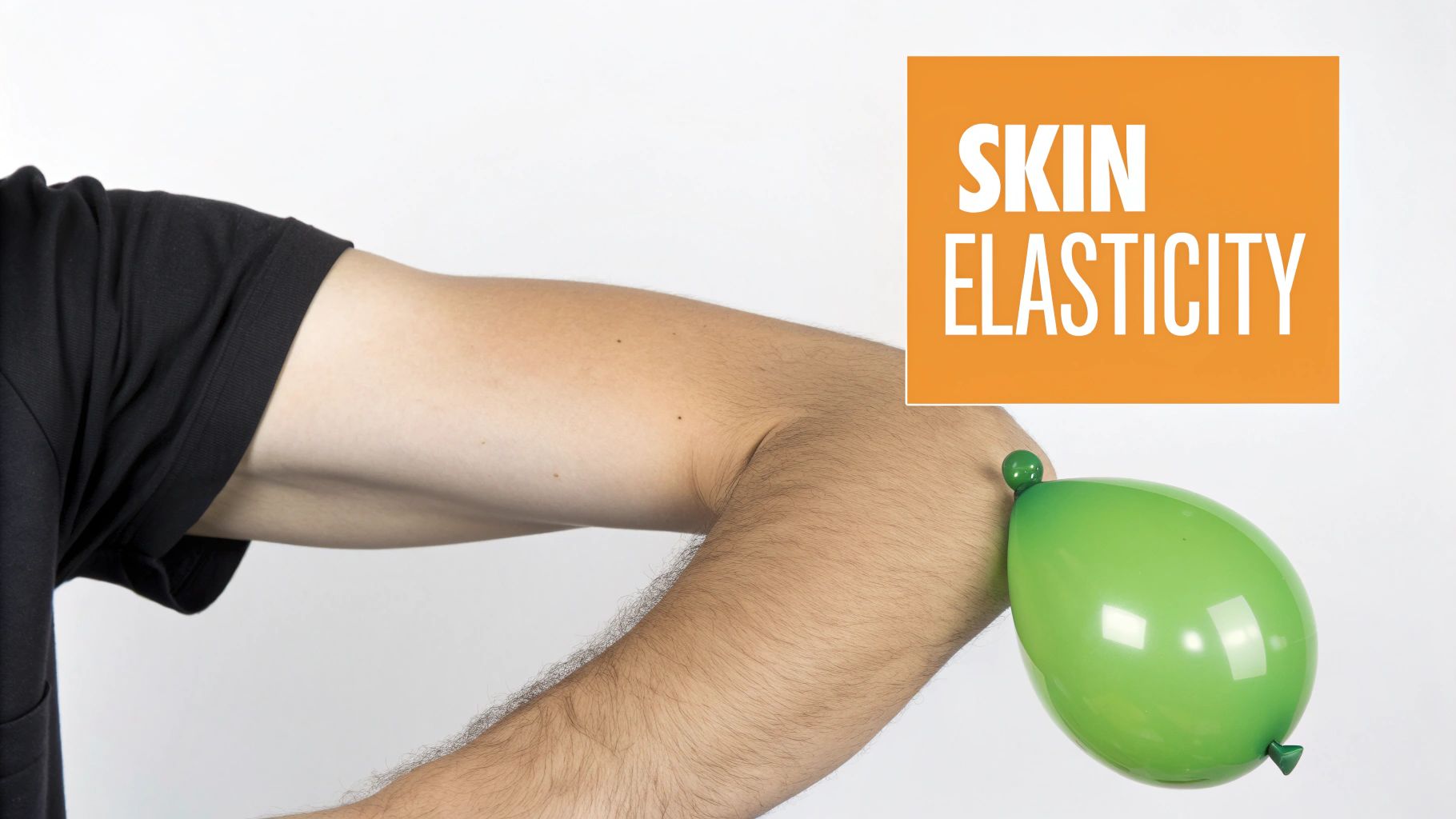
Think of your skin like a brand-new elastic band. When you gain weight, that band has to stretch to accommodate the new size. If it’s only stretched for a little while, it can usually snap right back.
But what happens if that band stays stretched for years? Its elastic properties start to wear out.
This is exactly what happens to your skin. The prolonged stretching damages two of the most important proteins in your skin's structure: collagen and elastin. Collagen gives your skin its firmness and structure, while elastin is what gives it that "snap-back" quality. When these protein fibers are overstretched for too long, they lose their ability to retract fully.
The Key Factors At Play
How your skin responds after weight loss isn't the same for everyone. It's not just about how many pounds you lost; it’s a mix of your personal history, lifestyle, and even your genetics.
A few key factors will determine how much your skin bounces back:
- How long you were overweight: The more time your skin spent stretched, the more its collagen and elastin fibers have likely weakened.
- How fast you lost the weight: Rapid weight loss, especially from very restrictive diets or certain medications, simply doesn't give your skin enough time to adapt and shrink down gradually.
- Your age: As we get older, our bodies naturally produce less collagen. This means older skin starts with less elasticity, making it more prone to sagging.
- Your genetics: Some people just win the genetic lottery. Your DNA plays a huge role in your skin's natural resilience and bounce-back ability.
We've put together a table to break down the main things that influence how your skin will react.
Key Factors That Affect Skin Elasticity
These are the primary factors that determine how much loose skin you might experience after losing weight.
| Factor | How It Affects Your Skin | What This Means for You |
|---|---|---|
| Duration of Overweight Status | The longer skin remains stretched, the more its collagen and elastin fibers can become damaged and lose their ability to retract. | If you were overweight for many years, you might face a bigger challenge with loose skin compared to someone who was overweight for a shorter time. |
| Speed of Weight Loss | Losing weight very quickly doesn't give your skin the time it needs to gradually shrink and adapt to your new body shape. | A slower, more sustainable weight loss of 1-2 pounds per week is generally better for skin retraction. |
| Age | Natural collagen production declines with age, meaning older skin has less inherent elasticity and firmness to begin with. | Younger individuals (in their 20s or 30s) often see better skin bounce-back than those over 40. |
| Genetics | Your unique genetic makeup determines your skin's natural elasticity, thickness, and resilience. | Some people are simply predisposed to having more elastic skin, while others may be more prone to sagging, regardless of other factors. |
As you can see, it's a combination of things you can and can't control. The key is to focus on the factors you can influence.
A common misconception is that skin will always bounce back on its own. While some degree of natural tightening occurs, significant weight loss often requires proactive measures to see substantial improvement.
The Science Of Skin Changes
Beyond the simple mechanics of stretching, there are some complex biological processes going on. The chronic inflammation often associated with being overweight can mess with the actual structure of your skin tissue.
This issue is then made worse by the weight loss process itself.
A fascinating 2019 study on post-bariatric surgery patients discovered that massive weight loss can further disrupt the skin's structural proteins. Researchers found a big drop in collagen XIV, a protein that helps regulate the skin's mechanical properties, and that inflammatory markers stayed high even after the weight was gone. You can dive deeper into these protein changes in the skin post-weight loss if you're curious.
This tells us the challenge isn't just about "shrinking" the skin; it's about rebuilding its entire support system from the ground up. To do that, you need to understand the fundamentals, which is why we created a full guide on how to improve skin elasticity.
Setting realistic expectations based on these biological realities is the foundation for a successful skin tightening plan.
Eating to Rebuild Your Skin from Within
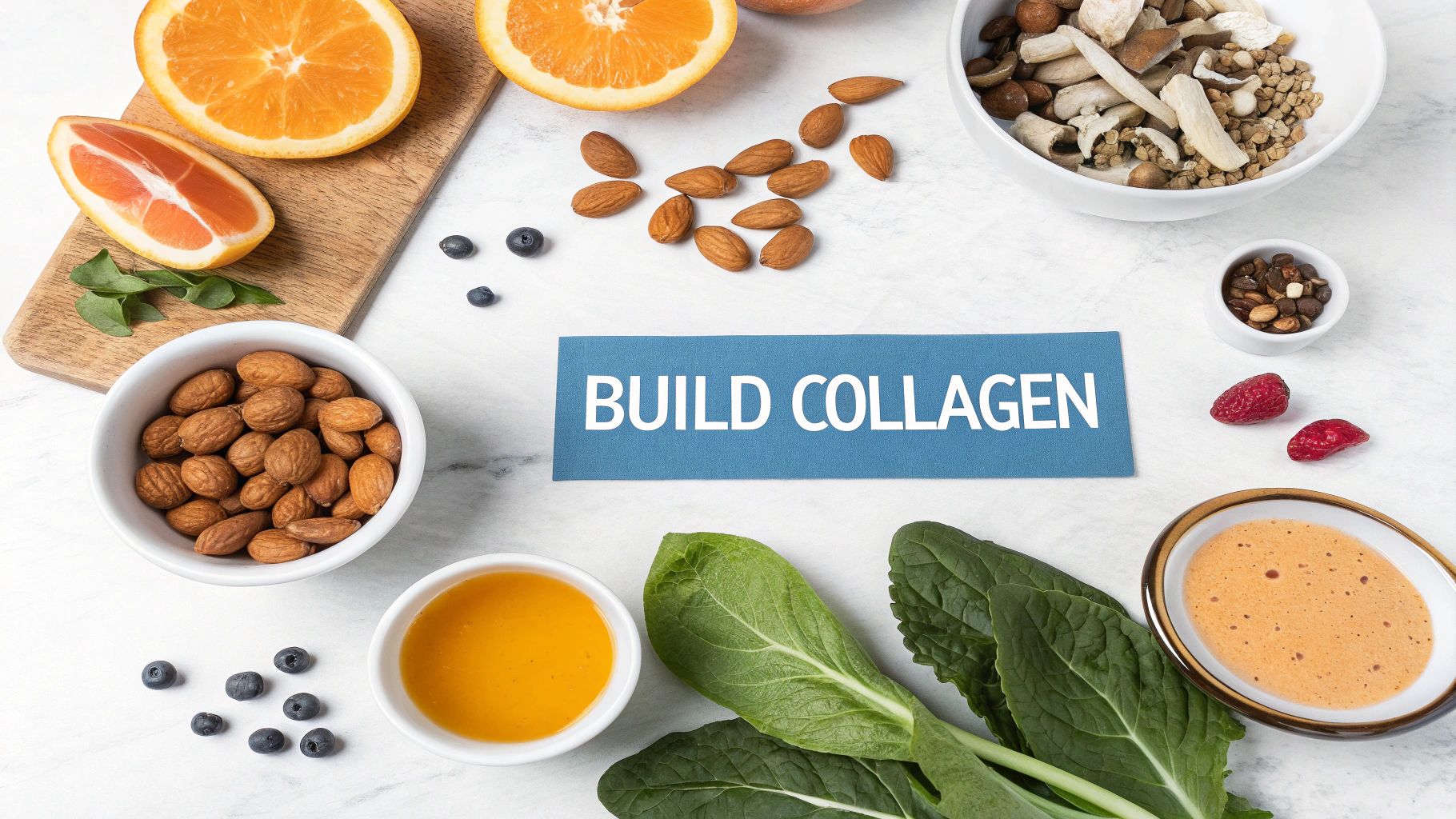
While creams and workouts are part of the picture, the most critical work for rebuilding your skin happens from the inside out. Your diet provides the literal raw materials your body needs to manufacture collagen and elastin—the two proteins that give your skin its firmness and bounce.
Think of it like a construction project. You can have the best crew in the world, but they can't build a strong wall without bricks and mortar. It's the same idea here. You have to supply your body with the right nutrients to reconstruct a resilient skin matrix.
This is about more than just "eating healthy." It requires a focused strategy, zeroing in on the specific amino acids, vitamins, and minerals that are directly involved in synthesizing new, strong skin tissue.
The Essential Skin-Building Nutrients
To really tighten your skin after losing weight, your grocery list needs to become a strategic tool. The mission is to consistently eat foods that support the complex job of creating new, strong collagen fibers. This all starts with protein, but not just any protein.
Your body is hunting for specific amino acids—the building blocks of protein—to get the job done. The most important ones for creating new collagen are glycine, proline, and hydroxyproline.
- Protein-Packed Powerhouses: Make high-quality protein the star of every meal. We're talking lean poultry, fish like salmon (which also delivers skin-loving omega-3s), eggs, and legumes. Bone broth is a superstar here, as it’s naturally loaded with glycine and proline.
- Vitamin C is Non-Negotiable: This is arguably the most crucial vitamin for skin health. Vitamin C acts as a cofactor, which means it’s a necessary "helper" molecule in the chemical reactions that link amino acids together to form strong collagen strands. Without enough of it, this entire process grinds to a halt.
- Key Mineral Support: Two minerals, zinc and copper, are also vital for this construction project. Zinc helps with protein synthesis and cell division, while copper activates an enzyme that's essential for maturing both collagen and elastin fibers into their final, strong form.
By making sure your diet is rich in these specific components, you're giving your body the absolute best chance to repair and tighten your skin.
Fueling Collagen Synthesis with Your Daily Meals
Knowing which nutrients you need is one thing, but actually getting them into your daily life is another. The key is to make small, consistent changes that add up over time. You don't need a radical diet overhaul—just a more mindful approach to your food choices.
For example, kick off your day with a protein-rich smoothie. You can toss in a scoop of collagen powder, a handful of spinach for minerals, and some berries for a serious dose of vitamin C. That one simple breakfast checks multiple boxes for skin support.
Another practical tip is to snack on foods that are naturally high in these nutrients. A handful of pumpkin seeds will give you a great source of zinc, while bell peppers and citrus fruits are packed with vitamin C. If you want to dive deeper, exploring some well-researched natural ways to boost collagen can give you even more great ideas for your plate.
Your body is constantly working to repair and regenerate tissue. Providing it with a steady stream of skin-supporting nutrients through your diet gives it the tools it needs to prioritize skin firmness and elasticity during this recovery phase.
Hydration: The Unsung Hero
Finally, never, ever underestimate the power of water. Proper hydration is absolutely critical for keeping your skin plump and elastic. When you're dehydrated, your skin looks more lax and crepey, which can make any looseness appear much more pronounced.
Water helps transport all those great nutrients to your skin cells and flush out waste products, creating the perfect environment for repair. Aim for at least eight glasses a day, and think about adding hydrating foods like cucumber, watermelon, and celery to your diet. Well-hydrated skin is healthier, more resilient, and far better equipped to snap back and adapt to your new body shape.
Using Strength Training to Firm and Tone
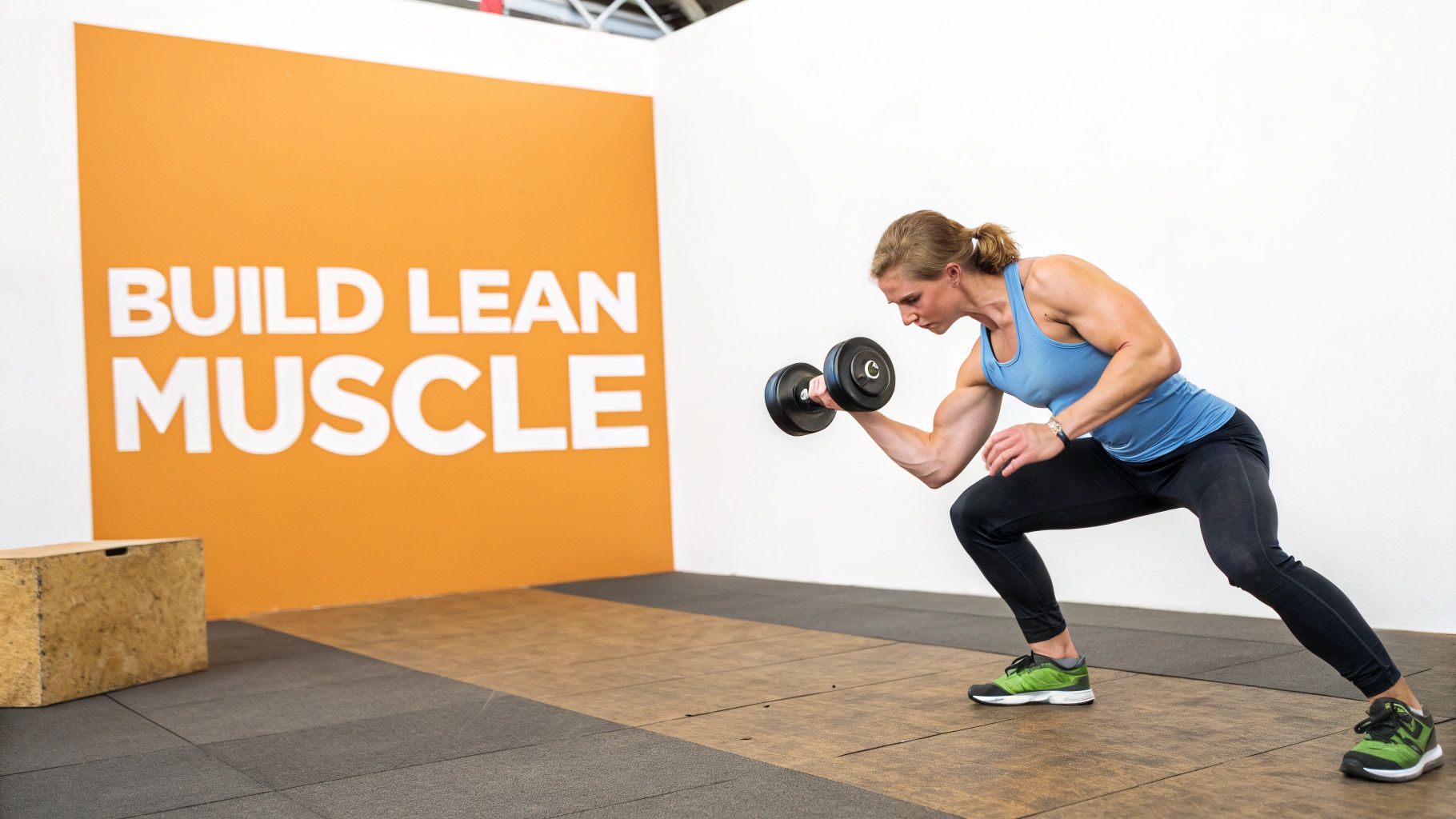
After hitting a major weight loss goal, the first instinct for many is to double down on cardio, thinking it will shrink and tighten everything up. While cardio is brilliant for your heart and for keeping the weight off, it does very little to address loose skin.
This is where strength training becomes your most powerful tool.
Think of your skin as a sheet that was once stretched over a larger frame. When you lose a lot of fat, that frame shrinks, but the sheet doesn't always snap back. Strength training is all about rebuilding that frame from the inside out by developing lean muscle. It literally helps "fill out" the space where the fat used to be.
This isn't about spot-reducing loose skin—that's a myth. Instead, you're building a strong, firm foundation underneath it, which can dramatically improve your skin's appearance, making it look smoother and more toned.
Building Muscle to Support Your Skin
Dealing with loose skin after losing 50 pounds or more is an incredibly common part of the journey. Resistance training is such a game-changer because it directly counters that loss of volume beneath the skin. As you replace soft fat with dense, firm muscle, you create new support that helps pull the skin more tautly over your new shape.
You can learn more about how muscle growth impacts loose skin on webmd.com.
This isn't just cosmetic; it's about restructuring your body. A lot of rapid weight loss plans can unfortunately cause you to lose muscle right along with the fat, which only makes skin seem looser. A smart strength training program reverses that, helping you build a strong, defined physique.
Targeting Key Areas with Resistance Exercises
While you can't target loose skin, you can absolutely target the muscles underneath it. By focusing your workouts on areas where skin laxity is most noticeable—like the abdomen, upper arms, and thighs—you can create a real firming effect.
Here are some of the best moves for those common trouble spots:
- For the Abdomen: Your core muscles act like a natural corset. Strengthening them provides incredible internal support. Focus on exercises like planks, leg raises, and Russian twists that hit the entire core.
- For the Upper Arms: To tackle "bat wings," you need to build both your biceps and triceps. Make sure your routine includes bicep curls, tricep dips (a bench or sturdy chair works great), and overhead tricep extensions.
- For the Thighs and Glutes: Building a strong lower body creates powerful, shapely legs that fill out the skin beautifully. Squats, lunges, and glute bridges are foundational movements that work the largest muscles in your body for the biggest impact.
Weaving these targeted exercises into a full-body routine is the best way to build a balanced, strong physique that supports your skin from every angle.
The key isn't to lift incredibly heavy from day one. It's about consistency and progressive overload—the principle of gradually increasing the weight, reps, or sets over time to continually challenge your muscles and stimulate growth.
Structuring Your Workouts for Success
To see real change, aim for two to three strength training sessions per week. It’s important to schedule them on non-consecutive days to give your muscles time to recover and grow. That recovery period is when the real magic happens.
If you're just starting out, you can begin with your own body weight and slowly introduce dumbbells or resistance bands as you get stronger.
Here’s what a simple, effective full-body workout for a beginner could look like:
- Warm-up (5 minutes): Get the blood flowing with light cardio like jogging in place, followed by dynamic stretches like arm circles and leg swings.
- Workout (3 sets of 10-12 reps per exercise):
- Goblet Squats (holding one dumbbell)
- Push-ups (on your knees or toes)
- Dumbbell Rows
- Walking Lunges
- Plank (hold for 30-60 seconds)
- Bicep Curls
- Tricep Dips (using a chair or bench)
- Cool-down (5 minutes): Finish with static stretching, holding each stretch for 20-30 seconds to improve flexibility.
This balanced approach builds functional strength that will serve you for years, all while helping you firm up. And don't forget, muscle is metabolically active, which means it burns more calories at rest than fat does—a fantastic bonus for maintaining your weight loss long-term.
Effective Topical Treatments That Actually Work
After all the hard work of losing weight, you’re probably looking for every tool you can find to help your skin bounce back. While your diet and exercise plan are the bedrock of tightening things up, a smart topical routine can give your skin some much-needed support. Let's be real—no cream is going to magically shrink loose skin overnight.
But what certain ingredients can do is genuinely support your skin's collagen production, boost its hydration, and improve its overall texture and strength. The trick is to ignore the marketing hype and focus on what the science actually shows.
Think of your skincare routine as another layer of your strategy. You eat specific foods to build collagen from the inside, and you can apply targeted ingredients to support that same process from the outside.
Powerhouse Ingredients for Skin Firmness
Walking down the skincare aisle is enough to make anyone's head spin. To cut through the noise, you really only need to focus on a few key ingredients that have a proven track record for improving skin structure. These are the heavy hitters that deliver real, noticeable benefits when you use them consistently.
Three ingredients have consistently earned their spot at the top of the list:
- Retinoids: These vitamin A derivatives are the gold standard in dermatology for a good reason. They work by speeding up cell turnover and, more importantly, kicking your skin's collagen-making machinery into high gear. Over time, this helps thicken and firm up the skin, which can definitely improve the look of mild looseness.
- Vitamin C Serums: Just like vitamin C is a must-have in your diet for building collagen, it’s a powerhouse antioxidant when you apply it directly to your skin. It acts like a bodyguard, protecting your existing collagen from sun damage and pollution, while also helping to form new collagen.
- Hyaluronic Acid: This one doesn't build new collagen, but it's an absolute moisture magnet. It's famous for holding up to 1,000 times its weight in water. This incredible hydrating power plumps up the skin from the outside, temporarily smoothing its surface and making it look fuller and less crepey.
Keep in mind that topical treatments are a long game. Consistency is so much more important than the price of the product. A simple routine with proven ingredients that you stick with will always beat an expensive, sporadic one.
Building Your Daily Body Care Routine
Putting together an effective routine doesn't have to be complicated. It’s really just about consistently giving your skin what it needs to be healthy, hydrated, and resilient. A simple two-part approach of exfoliation and moisturization can make a huge difference in your skin's texture and appearance.
First off, make exfoliation a regular habit. Using a gentle body scrub or a chemical exfoliant with something like glycolic or lactic acid helps clear away the dead, dull cells from the surface. This not only makes your skin look brighter and feel smoother right away but also clears the path for your firming creams and moisturizers to sink in and do their job. Aim for two to three times a week.
Next, get serious about moisturizing every single day. The best time is right after you shower, when your skin is still a bit damp, to really lock that moisture in. Look for body lotions that pack in some of the powerhouse ingredients we just talked about, or other great stuff like ceramides and peptides that help strengthen your skin's natural barrier.
For those looking to add another layer of targeted support, exploring the benefits of peptides for skin can be a game-changer, as these tiny proteins can send signals to your skin to ramp up its collagen production.
This daily care routine creates the perfect environment for your skin to repair and adapt, backing up all the other hard work you're doing to tighten your skin after weight loss.
Exploring Professional Skin Tightening Procedures
When you’ve put in the hard work with diet and exercise but still aren’t seeing the skin firmness you want, professional procedures can bridge that final gap. For anyone dealing with mild to moderate loose skin, the good news is there’s a whole range of non-invasive and minimally invasive options that don't involve surgery.
These modern technologies all work on a similar principle: they create controlled, targeted "damage" deep within the skin's layers. This isn’t as scary as it sounds. This process kickstarts your body's own natural healing response, signaling the cells responsible for producing new collagen and elastin—called fibroblasts—to get to work. The result is a gradual tightening and firming effect that builds from the inside out over several months.
Understanding Non-Invasive Technologies
The world of aesthetic technology has exploded, offering some truly effective solutions for tightening skin after weight loss. These procedures are incredibly popular because they usually come with minimal discomfort and little to no downtime, meaning you can get back to your life almost right away.
Three of the most reliable and widely used methods are:
- Radiofrequency (RF) Therapy: This treatment uses energy waves to gently heat the deep layers of your skin. That thermal energy is the trigger that gets your body to start producing more collagen, leading to firmer, smoother skin over time. It's a fantastic option for common trouble spots like the abdomen and arms.
- Ultrasound Therapy: Similar to RF, this approach uses focused ultrasound energy to heat the skin’s foundational layers. It gives practitioners pinpoint precision, allowing them to target specific depths to stimulate collagen renewal for a natural-looking lift.
- Microneedling (Collagen Induction Therapy): This procedure involves creating thousands of tiny, controlled micro-injuries in the skin with a device full of fine needles. This spurs your body's wound-healing cascade, resulting in a surge of fresh collagen and elastin. When it's combined with radiofrequency (RF Microneedling), the results can be even more dramatic.
It's so important to go in with realistic expectations. These non-invasive treatments deliver gradual, natural-looking improvements. They're best for people who are at or very close to their stable goal weight and have pretty good skin quality to begin with.
Who Is a Good Candidate for These Procedures?
These treatments are powerful tools, but they aren't a magic wand for everyone. The ideal candidate is someone who has achieved their weight loss goals and is now left with mild to moderate loose skin that hasn’t bounced back with other methods.
You might be a great fit if:
- You’ve been at a stable weight for at least a few months.
- You are in good overall health.
- You understand that the best results will appear gradually over 3-6 months.
- You have realistic goals for what non-surgical treatments can achieve.
The infographic below offers a simplified way to think about how to approach improving skin firmness, starting with the basics at home.
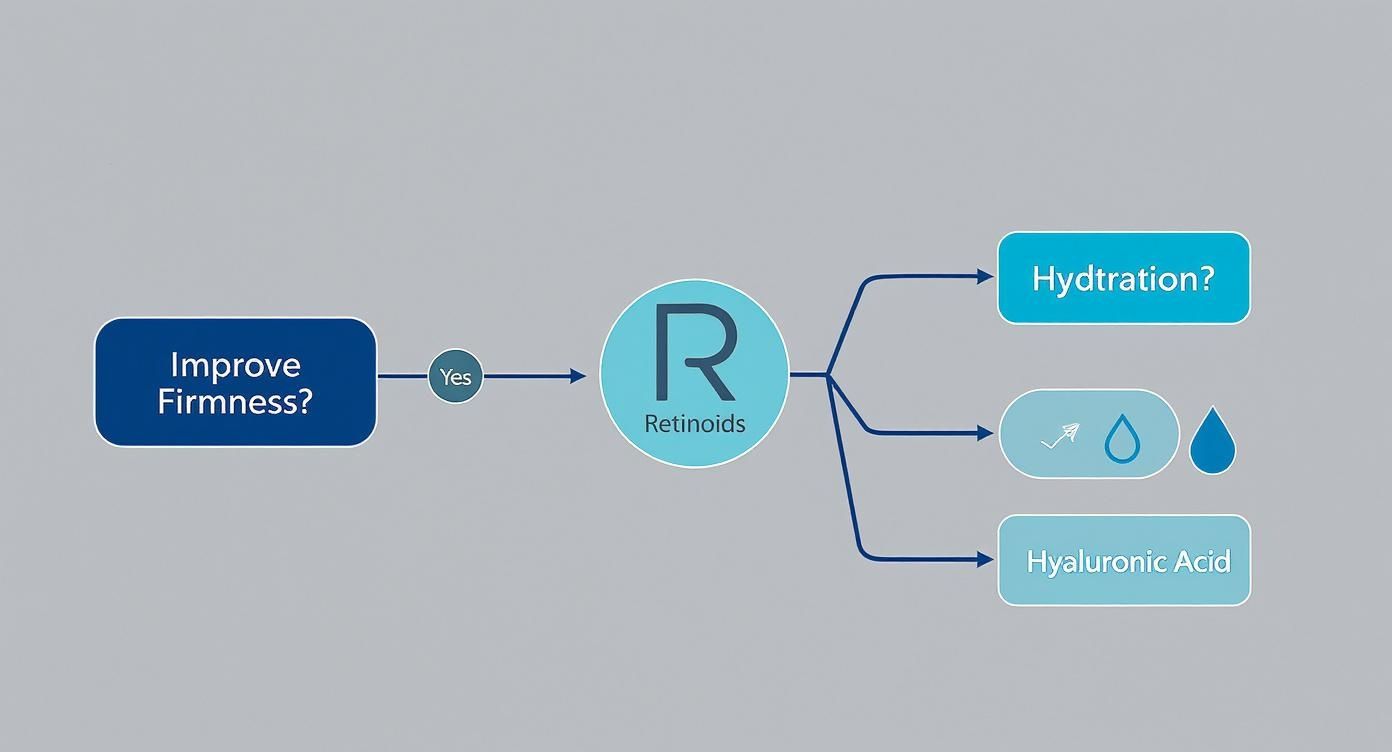
This decision tree really drives home how foundational elements like retinoids and proper hydration are the non-negotiable first steps on any skin-firming journey.
The demand for these types of procedures has skyrocketed, showing a major shift in what people are looking for. The global skin tightening market was valued at over USD 660 million in 2022, a figure largely pushed by the popularity of non-invasive options. This trend is even backed by clinical research suggesting some at-home radiofrequency devices can offer noticeable improvements. You can get more details on the growing skin tightening market on gminsights.com.
For anyone with a more significant amount of loose skin—think large folds that hang away from the body—non-surgical options may not deliver the results you’re hoping for. In those cases, surgical procedures like a tummy tuck or an arm lift are often the most effective solution. The best first step is always an honest conversation with a board-certified dermatologist or plastic surgeon to figure out the right path for your body and your goals.
Answering Your Top Skin Tightening Questions
Once you’ve hit a major weight loss goal, turning your focus to skin tightening is the natural next step. It's completely normal to have a ton of questions about what works, what to expect, and what’s actually achievable. Getting clear, honest answers is the best way to set realistic goals and move forward with confidence.
Let's dive into some of the most common concerns people have when they start this part of their journey.
How Long Does It Take to See Results?
This is always the first question, and the honest-to-goodness answer is: it depends. The timeline for seeing firmer, tighter skin varies for everyone based on the methods you choose, how your body responds, and—most importantly—your consistency.
- Diet and Exercise: This is the long game. If you’re hitting the weights and dialing in your nutrition, you're building a solid foundation. You might start to notice subtle improvements in skin tone and muscle definition within 2-3 months, but more significant changes often take 6 months to a year of dedicated effort.
- Topical Treatments: Using high-quality topicals with ingredients like retinoids can definitely help. With consistent daily use, you could see improvements in skin texture and firmness in about 3-6 months. Think of these as powerful support players, not the main event.
- Professional Procedures: Things like radiofrequency or microneedling can deliver more noticeable results, but even they require patience. While you might see some initial improvements within a few weeks, the full effect—which comes from new collagen growth—typically unfolds over 3-6 months.
The biggest takeaway here is that skin tightening is a gradual process of rebuilding from the inside out. There are no overnight fixes, and consistency is your single most valuable tool.
Do Collagen Supplements Actually Work?
The buzz around collagen supplements is huge right now, and it makes sense. If your skin needs more collagen, why not just eat it? Research into hydrolyzed collagen peptides shows they can be absorbed into your bloodstream and may help improve skin hydration and elasticity.
But it's not a magic pill. A supplement is only as good as the diet it's supplementing.
Your body still needs a full toolkit of nutrients—especially vitamin C, zinc, and plenty of protein—to actually use that collagen and build its own new skin structures. If you do decide to give them a try, look for hydrolyzed collagen peptides from a reputable brand, as this form is easier for your body to absorb. Just consider it a boost, not a replacement for a solid nutritional foundation.
Can Skin Tighten Completely Without Surgery?
For many people, absolutely. If you're dealing with mild to moderate skin laxity, a smart combination of strength training, targeted nutrition, and maybe some non-invasive procedures can produce incredible results. Often, it's more than enough to achieve the toned, confident look you’re after. The skin has a remarkable capacity to bounce back, especially when you're younger.
However, we need to be realistic. For someone who has lost a massive amount of weight—think 100+ pounds—and is left with significant amounts of loose, hanging skin, non-surgical methods might not be enough. In these situations, the skin’s elastic fibers have often been stretched far beyond their natural point of return.
This is where surgical procedures like a tummy tuck (abdominoplasty) or arm lift (brachioplasty) come in. They are designed specifically to remove that excess skin and are often the most effective path to a dramatic, lasting transformation in cases of severe laxity.
At What Point Does Weight Loss Cause Loose Skin?
There isn’t a magic number on the scale that guarantees loose skin. It’s incredibly individual and depends on things like your genetics, your age, and how long you carried the extra weight.
That said, loose skin generally becomes a more common concern for people who lose 50 pounds or more. The speed of your weight loss matters, too. Dropping weight very rapidly, which can happen with certain diets or medications, simply doesn't give your skin's collagen and elastin enough time to adapt and shrink back. A slower, steadier pace of 1-2 pounds per week is always going to be kinder to your skin.
At Elite Bioscience, we provide advanced peptide and vitamin therapies designed to support your body's wellness from the inside out. Our protocols can aid in collagen production and optimize your body's natural repair processes. Explore our tailored solutions to elevate your health journey at https://elitebioscience.co.
QUICK SEARCH
Make an account today to start your journey towards a better and healthier lifestyle.
